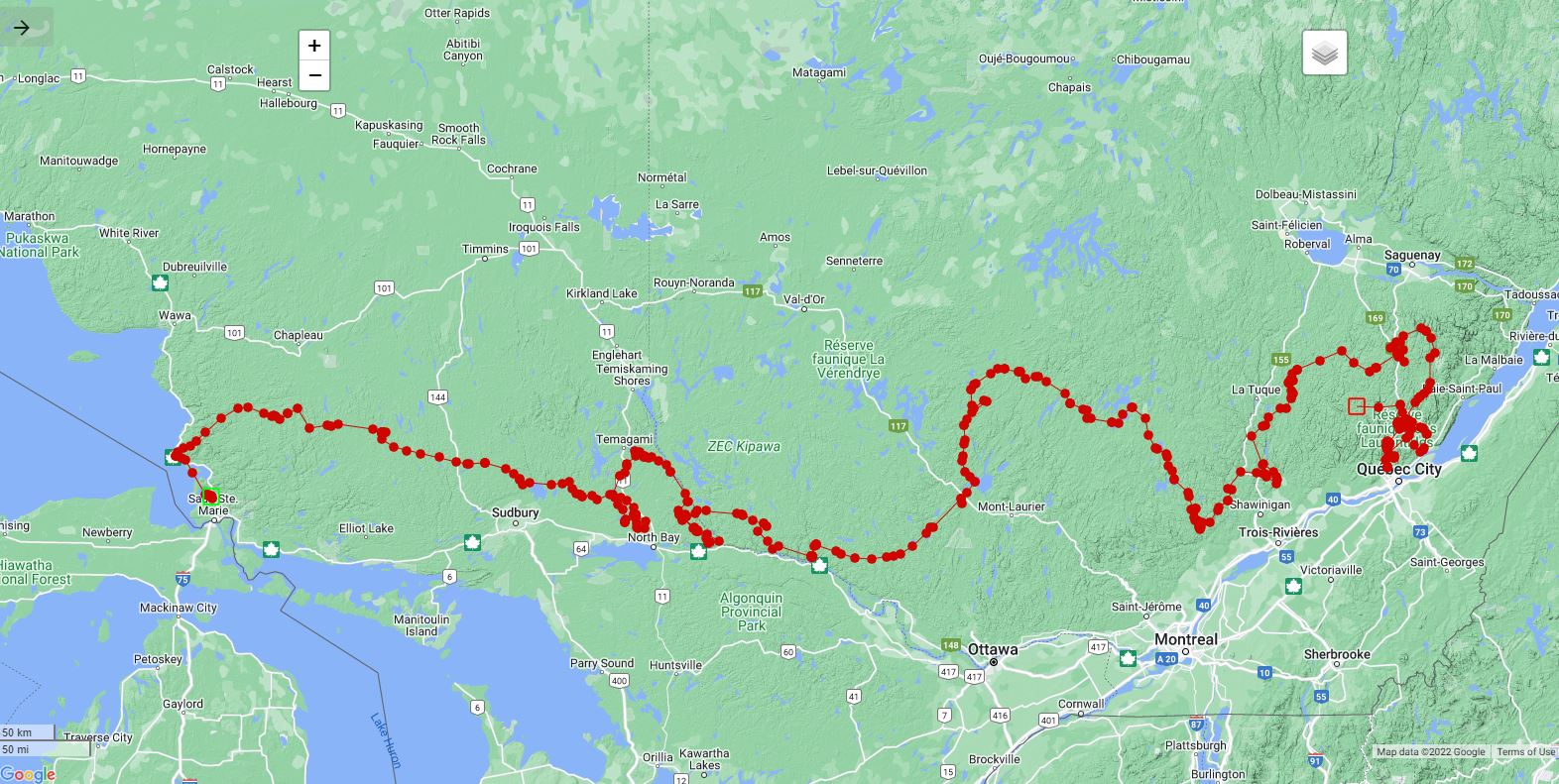Wildlife Research Project
Ruby, the Wandering Grey Wolf
In March 2022 we had the opportunity to radio collar a young female wolf in the Prince Township area. Affectionately named ‘Ruby’, it became apparent the moment she was collared that she was on a mission.

Within days of collaring Ruby, we began to receive transmissions of several locations per day indicating she was leaving the Prince Township area. Initially, she began travelling north along the Superior coast, but abruptly altered her course and started travelling east towards the North Bay area, covering 500km in just 3 weeks!
Upon reaching North Bay, Ruby’s pace slowed as she explored the area. While we can’t be sure what kept her wandering around this location, the time she spent in this area corresponds to brief snowfall followed by melt, when it would have been very difficult for her to travel long distances. As we believe Ruby is travelling alone, it makes sense for her to conserve as much energy as possible before continuing on towards quite possibly her biggest challenge yet: crossing the frigid waters of the Ottawa River.
When Ruby first encountered the Ottawa River on April 22nd, it appeared as if she wanted to cross; however, she neglected to follow through. This could be due to the fact that she was waiting for the safest time to do so, scouting out a safer crossing point when the current and temperature were in her favour.
After what appeared to be 11 days of waiting, Ruby chose to cross the Ottawa River at a location which had no obvious dams or bridges, requiring her to swim between 500 - 1000m through flowing water.
Ruby's most recent transmission signal indicates that she is currently exploring Laurentides Wildlife Reserve in Quebec. Since her trip began, Ruby has covered a total of 2500 km in 4 months, with a total straight line distance of about 1000 km from her capture location to her most eastern location!
While her motivations at this time are unclear, extreme long-distance travel can be a result of juvenile grey wolves looking for a mate and a new territory. This type of movement (known as dispersal) is crucial to ensuring a balanced ecosystem. Travelling long distances and settling into new habitats allow animals to avoid competition, reduce their risk of inbreeding and access fresh resources. However, long-distance dispersal is no walk in the park - despite the many benefits, wildlife are exposed to a greater risk of mortality through energy expenditure, predation, unfamiliar habitats, landscape features and human conflict.
Following Ruby’s movements will allow us to further our knowledge of wolf movement and habitat utilization. Over the course of our project, we will be comparing Ruby’s movements to Fifi, a local breeding female who is showing more conventional movements. You can learn more about Fifi on our next blog update.
Our project is made possible thanks to a passionate group of volunteers and strong collaborative partners.
You can learn more about our partners here.




